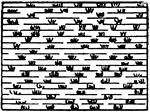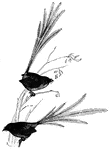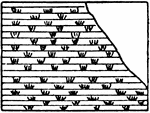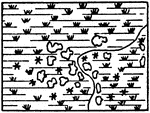Clipart tagged: ‘bog’

Juncus Acutiflorus
Juncus acutiflorus belongs to a genus of grass-like herbs (Juncus) that grow in boggy places.

Juncus Compressus
Juncus compressus belongs to a genus of grass-like herbs (Juncus) that grow in boggy places.
Juncus Conglomeratus
Juncus conglomeratus, also known as the common rush, belongs to a genus of grass-like herbs (Juncus)…

Juncus Effusus
Known as the soft rush, Juncus effusus is nearly as common as the most common species, J. conglomeratus.…

Juncus Glaucus
Juncus glaucus belongs to a genus of grass-like herbs (Juncus) that grow in boggy places.

Juncus Squamosus
Juncus squamosus belongs to a genus of grass-like herbs (Juncus) that grow in boggy places.

Lake and Vegetation
"Diagram illustrating the gradual filling up of lakes by the encroachment of vegetation, and also the…

Fresh Marsh
The typical representation of a marsh in general (or fresh marsh) on a topographical map.

Emu Wren
Native to Australia, this is known to natives of New South Wales as waw-gul-jelly. It is shy…

Yellow-Eyed Grass
Of the yellow-eyed grass family (Xyris), from left to right: bog (X. difformis), Richard's (X. elata),…





